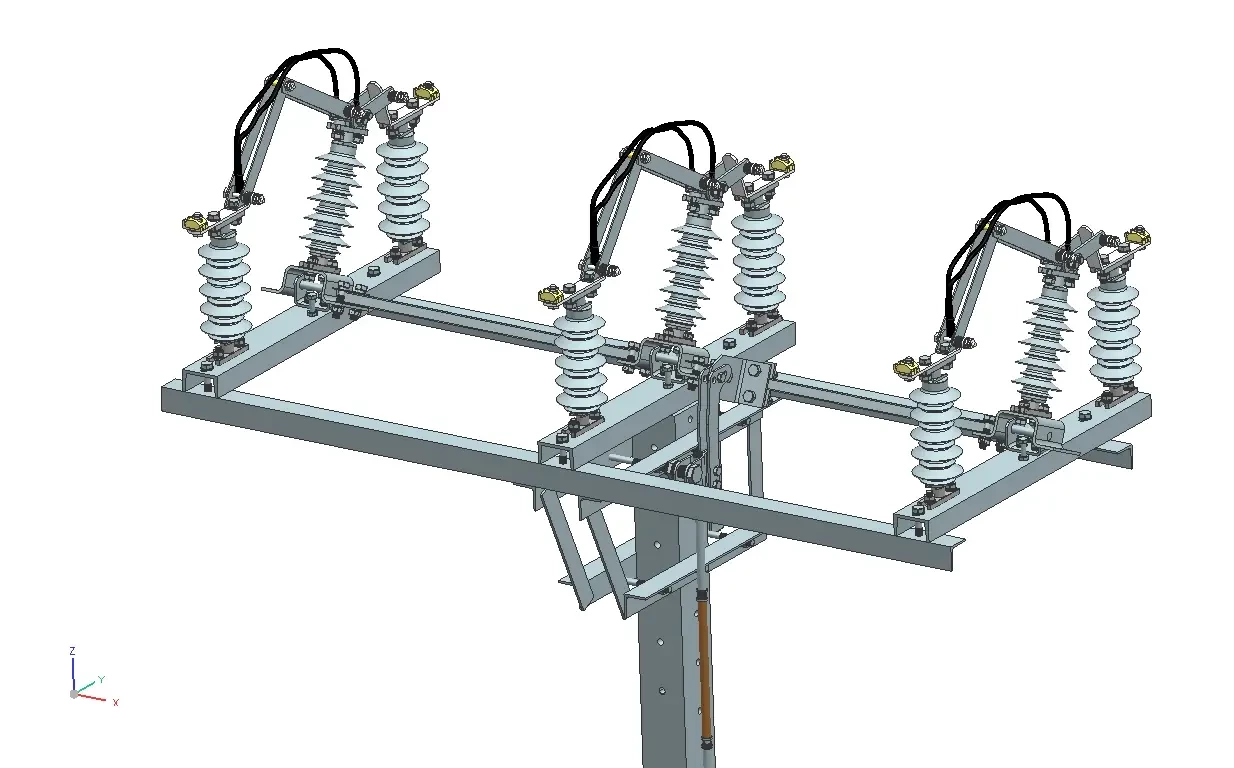High Voltage Isolating Switch Structure
Commonly used High Voltage Isolator Switch are GN19-10, GN19-10C, and the corresponding similar old products are GN6-10, GN8-10. Taking GN19-10 as an example, it mainly includes the following parts:
Conductive part
The static contact is composed of a copper plate bent at a right angle, and the end with a hole can be connected to the busbar through a screw; the other end is shorter, and it contacts the moving blade (moving contact) when the switch is closed.
The two copper plates form a contact strip, also known as a moving contact, which can rotate around the axis at a certain angle and clamp the static contact when the switch is closed. There is a clamping spring between the two copper plates to adjust the contact pressure between the moving and static contacts. At the same time, when the current in the same direction flows through the two copper plates, they generate an electromotive force of mutual attraction, which increases the contact pressure and improves the operating reliability. Galvanized steel sheets called magnetic locks are installed at both ends of the contact strip. They ensure that when a short-circuit fault current flows, the magnetized magnetic locks generate a force of mutual attraction, which strengthens the contact pressure of the contacts, thereby improving the dynamic and thermal stability of the disconnector.
Insulation part
The moving and static contacts are fixed on two sets of supporting porcelain bottles respectively. For the model with C, the moving contact is fixed on the sleeve porcelain bottle. In order to insulate the moving contact from the metal and grounded transmission part, a porcelain-insulated pull rod insulator is used.
Transmission part
There are main shafts, crank arms, pull rod insulators, etc.
Base part
It is composed of a steel frame. The supporting porcelain bottle or sleeve porcelain bottle and the transmission main shaft are fixed on the base. The base should be grounded. In short, the disconnector has a simple structure, no arc extinguishing device, and has an obvious disconnection point when it is in the disconnected position, and its separation and closing state is very intuitive.

